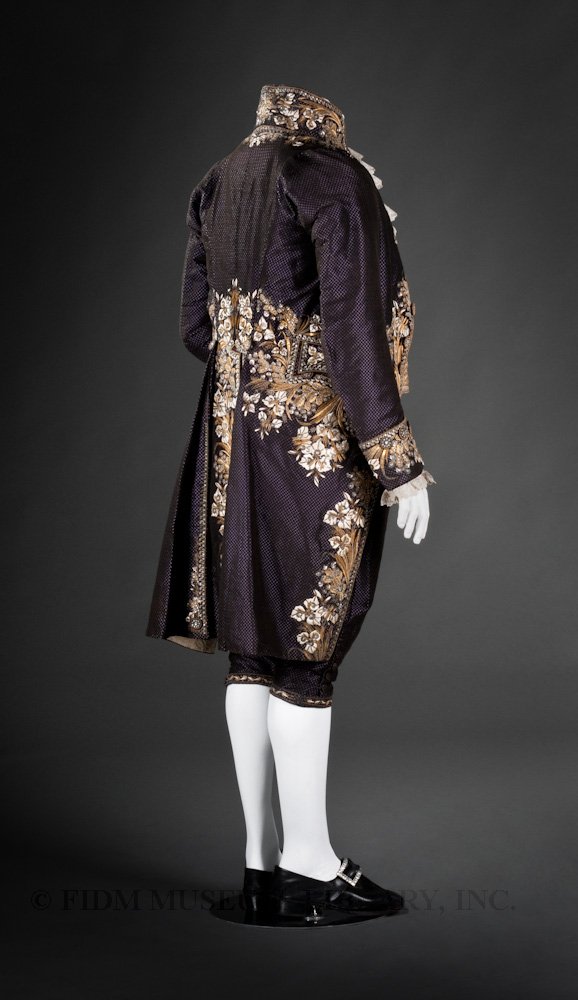Behind the Music
In honor of Museum Week, we are excited to share the story behind one of the most exquisite and rare objects in our collection: Austrian composer and pianist Johann Hummel's three-piece court suit, dating to 1810-14!
The ensemble was donated by a member of the Hummel family in 2009, thanks to a combination of perfect timing, location, and luck. Yvonne Hummel is married to the great-great-great grandson of Johann Hummel (1778-1837), and she had recently cleared out the family's property in Italy of furniture, clothing, and antiques. Yvonne lived down the street from the FIDM Museum in downtown Los Angeles, and her neighbor Mary had previously visited our annual Art of Motion Picture Costume Design exhibition. Mary suggested Yvonne call the Museum to see if we would be interested in these family heirlooms. She made an appointment, but didn't mention what she was bringing. On the day of the appointment, Yvonne and Mary walked down the street with the donations in a rolling cart. Once everyone was settled, our curators remember Yvonne pulling the coat out of her bag, and suddenly everyone in the office stopped what they were doing! They thought there was no way it could be authentic, or a complete ensemble. But sure enough, next came the breeches, followed by the waistcoat...and indeed, it was a complete, elaborate court suit belonging to a famous European composer - in pristine condition, no less!
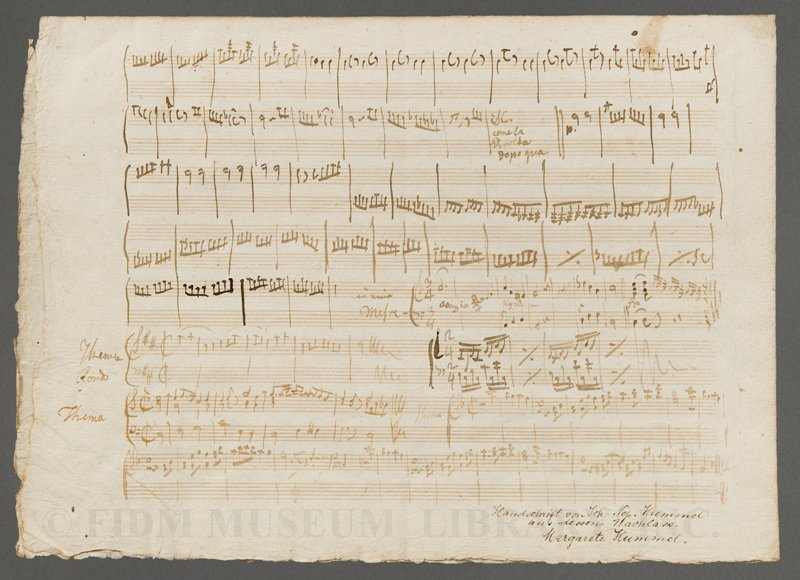 Autograph sketch-leaf composition
Autograph sketch-leaf composition
1800-1820
Gift of Yvonne Hummel
SC2010.947.21
These suits are insanely difficult to find, particularly with the fine silver and gold embroidery, rhinestones, and sequins on uncut voided silk velvet showcased in this example. Not only did this suit walk straight into our front door, it is also completely documented directly from the Hummel family! In fact, Yvonne generously gave the Museum a lithograph of Johann Hummel with a lock of his hair, and a folio of original hand-written music. The music is an unfinished and/or unknown composition, but in another stroke of luck, our very own Associate Curator Christina Johnson is an accomplished flautist! Christina played the short piece for us, which you can listen to here: Download New Recording.
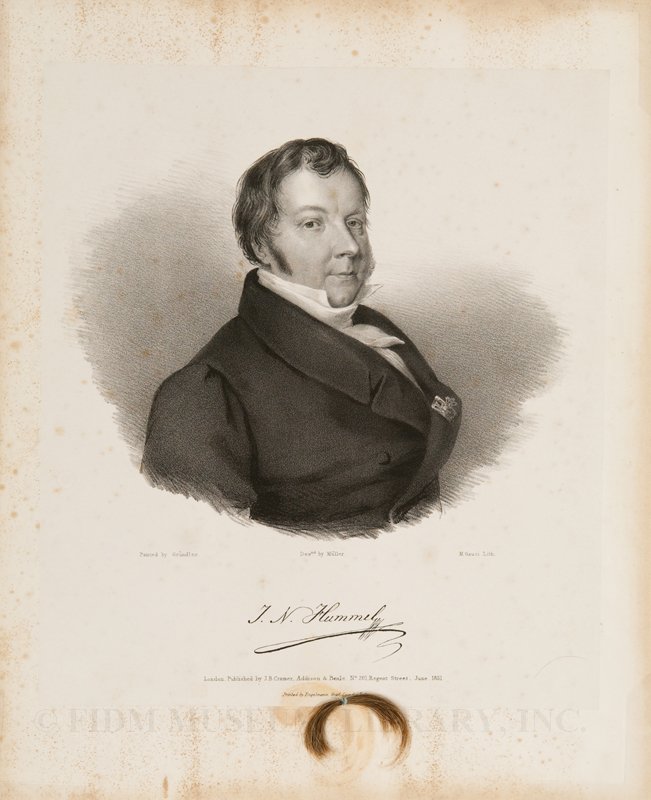 Lithograph with lock of hair
Lithograph with lock of hair
June 1831
Gift of Yvonne Hummel
SC2010.947.22
It is thrilling to have this important piece of both fashion and musical history in our collection, and we are so grateful to the Hummel family. The ensemble was featured in the 2011 exhibition FABULOUS! Ten Years of FIDM Museum Acquisitions, 2000 - 2010; you can read a detailed post about Johann Hummel and his court suit below.
**********************************************
Since our FABULOUS! exhibition opened in September, we've featured selected exhibition highlights on our blog. As FABULOUS! closes tomorrow, this post will be our final installment in the series. Want to revisit favorite pieces from the exhibition? Click here for a complete listing of FABULOUS! blog posts.
This final FABULOUS! post features a stunning early 19th century court suit with a fascinating provenance. Consisting of a jacket and breeches of aubergine silk velvet decorated with silk and metallic embroidery and a cream silk faille vest, this court suit would be a highlight of our collection with or without a known provenance. But its excellent condition and documented provenance make it even more historically important. Created late in the reign of Emperor Napoleon Bonaparte (r. 1804-1814/15) by handloom weavers and master embroiders, its uncut voided velvet with gold, silver, rhinestone, and sequin decoration is truly regal. It was donated to the FIDM Museum in 2008 by the family of Johann Hummel's great-great grandson, Michael Hummel. We featured a glimpse of this court suit on our blog in 2009, a few months after it was donated.
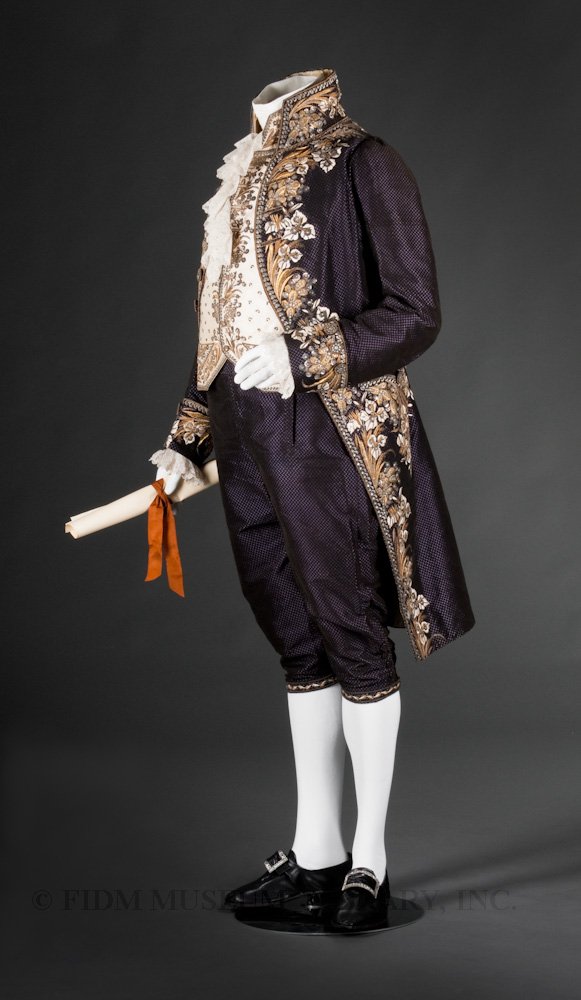
Court suit
Uncut voided silk velvet, silk faille, silk embroidery floss, gold & silver embroidery purl & frieze, rhinestone & metal sequins
c. 1810-14
Paris, France
Gift of Yvonne Hummel
2008.947.2A-C
Austrian composer Johann Hummel (1778-1837) commissioned this court suit for an important performance, possibly at the Congress of Vienna (1814-1815), which was held to reposition the boundaries of Europe after Napoleon’s defeat at the Battle of Waterloo. European courts vied with one another for political survival, particularly as Napoleon overthrew ancient monarchies and filled their vacant thrones with his own family members. When paying homage at court, a splendid appearance was de rigueur. By the time he commissioned this suit, Hummel was a successful composer. A contemporary biographer noted: “Having been always very prudent in the management of his affairs, M. Hummel is now in the possession of an independent fortune, such as enables him to keep a carriage, and to live in every respect in the style of the opulent and grand.”1
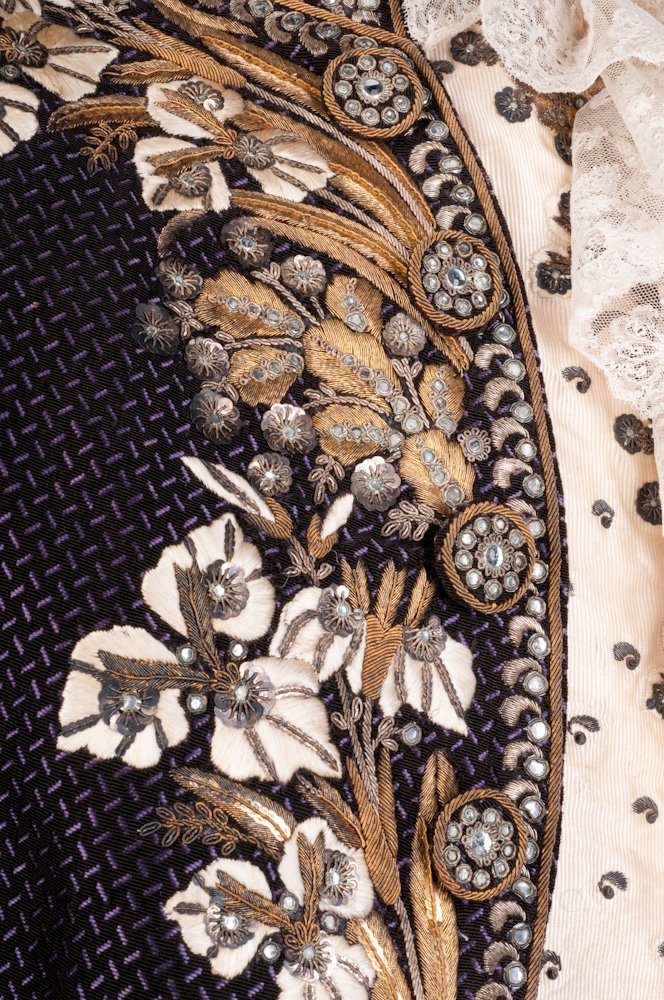 2008.947.2A-C Jacket & vest detail
2008.947.2A-C Jacket & vest detail
White satin stitch embroidery forms iris motifs, while gold metallic embroidery creates the stems. The buttons are embellished with gold braid and small glass ornaments.
Born in modern day Slovakia, Johann Hummel's family moved to Vienna when they recognized that their child was a musical prodigy. Due to his exceptional talent, Hummel began studying under Mozart when he was only 7 years old. When he was 9, Hummel's family embarked on an extensive European tour. During this four-year tour of European capitols, Hummel honed his composition and performance skills by performing for European royalty, including King George III and the Prince of Orange. Returning to Vienna, Hummel studied with Antonio Salieri and Albrechtsberger. Beethoven, though several years older than Hummel, was a friend and musical rival. Hummel was extremely well-known during his life-time, but his style of classical composition fell out of favor towards the end of his life. His work was almost entirely forgotten until a Hummel score was re-discovered in the late 1950s. Listen to a Hummel composition here.
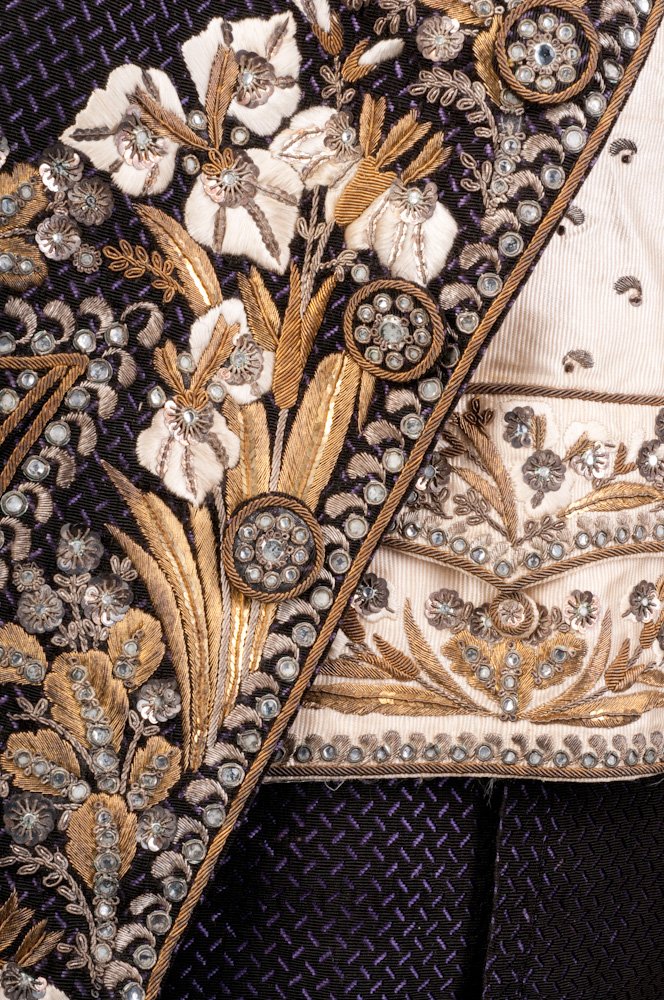 2008.947.2A-C Detail showing jacket, vest & breeches.
2008.947.2A-C Detail showing jacket, vest & breeches.
At the time Hummel commissioned this court suit, court dress was increasingly distant from everyday dress. Though lavish, it was an event-specific uniform. By about 1800, luxurious fabrics and heavy embellishment were no longer in fashion for men's suits. Instead, men donned three-piece suits made of sturdy woolen fabrics, with little or no embellishment. Decorative court dress was a remnant of seventeenth and eighteenth century fashions, which favored an equal amount of embellishment for both men and women. In the nineteenth century, excellent tailoring, rather than extraordinary embellishment, would define a fashionable men's suit.
1 "Memoir of Johann Nepomuk Hummel." in The Harmonium, Number XVIII (London: W. Pinrock, June 1824) 104.
